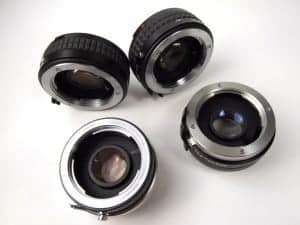Prime Lenses: a term bandied about by photography aficionados. To a beginner, it can sound daunting. But with a little information you'll see that a prime lens really isn't so intimidating.
A zoom lens has a multitude of focal lengths (ranging, for example, from 70-200mm or 80-300mm) and can shoot from wide angle to telephoto (and everything in between!). A prime lens, on the other hand, is a lens with a fixed focal length (such as a 35mm, a 50mm, or a 105mm lens). With a prime lens, you and your feet are the zoom. Need to get in a little closer? Take a step forward. Need more distance? A few strides back will do the trick. You have to physically move the camera instead of using the lens to zoom in and out.
After that description, you might wonder why anyone would want a prime lens! Doesn't all that moving around sound troublesome?
Aside from the health benefits you get from walking around (every little bit helps!), prime lenses have other benefits as well that make them an important part of your photography tool kit. Prime lenses use less glass and they have fewer moving parts. They are frequently sharper and more compact than their zoom counterparts. They are often smaller and lighter in weight which translates to easier maneuverability when shooting handheld. Prime lenses have a reputation for superior optical quality (though newer zoom lenses are giving primes a run for their money).
With a prime lens, you get greater and finer control for precision focusing. Additionally, prime lenses usually offer wider maximum apertures (such as f/2.8 or f/1.4). That creates a nice soft background or bokeh, a Japanese term for the aesthetic quality of the out-of-focus areas in a photograph.
Years ago, the standard lens that almost every camera came with was a 50mm prime lens (sometimes known as the “Nifty 50”). That was a staple in nearly every camera bag. Today when you head to your local camera store or surf your favorite online merchant, you will see that cameras are packaged with what is known as a kit lens (something like an 18-200mm f/3.5-f/5.6 lens). Generally, kit lenses are variable aperture lenses. (Variable aperture means that the lowest available aperture value varies when the camera zooms in tighter. When the lens is racked out or fully extended, the f/stop is at f/5.6 – not exactly optimal in low light conditions.) With a prime lens, the aperture doesn't fluctuate.
Most novice photographers launch their photographic aspirations with a kit lens. And that’s fine – kit lenses are great starter lenses. But once you advance – and especially when you have gear envy – you set the bar higher and want to take better shots. One way to get you there is to improve the quality of your equipment. Observe what you are shooting – what are your tendencies? Do you shoot a lot of macro? Landscapes? Portraits? Figure out what focal length you generally shoot at and consider getting a prime lens. Now photography has evolved into more of an artistic endeavor for you.
The bottom line? A prime lens is a good investment whether you are a beginner or a professional. Check out our recommended gear page for some prime lens suggestions.


Hi there! Great info you are sharing… I just started shooting weddings more frequently and all I shoot with is a prime 50 for most shots and a prime macro for details. If I were to add an additional lens to the Nikon compatible family would you say that a 24-70 or 70-200 if more essential? Or maybe something else?